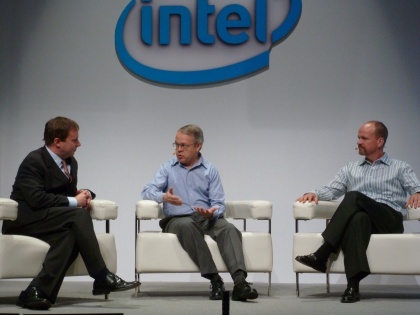Switching topic order to Intel then IBM:
Agreed, especially the torture bit, and going deeper, I see routine, extreme high level engineering incompetence that eventually extended to and destroyed the leading edge logic fabrication golden goose with the failed transition to 10 nm/Intel 7.
Off the top of my head, older examples include their RISC attempts, Itanium, Rambus RDRAM which resulted in
two million part recalls, one of which was motherboards Dell was about to ship, front side bus vs. ccNUMA, and AMD64. Netburst (P4) was at minimum a fabrication failure, was predicated as a "marketing architecture" on getting parts up to 10 GHz just before Dennard scaling failed.
No surprise that a company with such sustained horrible high level technical management would ignore their teething problems with 14 nm and fail for
years with the next node. I also see this as illuminating the IDM or not question:
Would Intel be succeeding well enough today if they hadn't failed so hard with 10 nm, and BK hadn't gutted their verification function? Those together trashed their x86 business line for a long time, which we believe after their exit from memory was the only thing they were institutionally able to do. It's a path they
couldn't take, which leads to:
Another way to look at this is risk management, the success of the IDM model depends on sufficient success at
both design and fabrication. Whatever you can say about AMD's fabrication problems before and after the spinoff, not being locked into Global Foundries allowed them to eventually move to pure play foundry TSMC. A company can be good at only so many things; for AMD, see their GPGPU software problems.That structure was a big, historical change for IBM. Their punched card computing history was much more in the minicomputer style, and their history of minicomputers goes way back further.
The 1954 not a mainframe IBM 650 was the first mass produced computer and at the low end was followed by the very clever 1959 IBM 1620 scientific computer. Which for the first version used a great deal of its budget on core memory, which IBM was very good at vs. the drum memory used in the 650. Thus the CADET internal name was backronymed into Can't Add, Doesn't Even Try, math was done with tables in memory rather than logic.
According to Wikipedia citing memories of the people doing it, the other half of the phrase "space cadet" was the code name for the very successful also released in 1959 IBM 1401 for business.
Which continued to be produced after the System/360 consolidation of its previous numerous computer lines, and was the father of the System 3, which lead to four System 3N systems, the last of those the ambitious System 38 being the ancestor of the AS/400, now the "i" line.
On the scientific end, the CADET which according to Wikipedia sold about 2,000 units was followed by the IBM 1130 based on System/360 technology, about 10,000 sold. And it was the introduction to programming for a very large number of people including myself at the end of its run. A lot of cleverness was used to make it as inexpensive as possible, like its entry level very slow printer. Wikipedia says it was followed by a System/7 and Series/1. all three from Boca Raton, Florida, home of the IBM PC.
As a programming and systems type, I see
the major IBM inflection point as the internal politics that accompanied the "bet the company" System/360 effort. Which was so difficult, from hardware production to software, IBM swore to never try that again, so it eventually became today's high end for them "z" series.
I believe that environment allowed the decision to eschew virtual memory to become iron dogma, all the way through the first set of Series/370 models. That immediately lost them almost all of the higher education market, a lot of which moved to DEC's first mainframe lines, the PDP-6/10/20s with a dead end 18 bits of 36 bit words address space, or 1 MB (IBM's pre-64 bit mainframes were 31 bits of 8 bit bytes, or 2 GB). Along with very bad systems software they funneled their high end into an eventual big business ghetto with no mind share.
At the lowest end, IBM utilizing the Boca Raton crew launched the Intel 8088 CPU based IBM PC. But except for the minor XT revision, the company never really understood the importance of compatibility. They were able to once more move the whole industry with the 286 based IBM AT. What followed was very ugly, Compaq didn't care about IBM's internal infirmaries and launched the first major 386 desktop, and see Micro Channel, and its echoes at DEC following the success of the Unibus and Q-bus.
IBM having bluewashed Boca Raton realized its design cycle was about 4 years long compared to the industry's 2 years or less, so they designed a high speed 16/32 bus and tried the old trick of initially only using and licencing it at half speed. Other companies were not so constrained.

